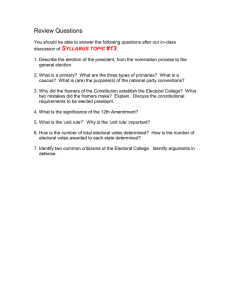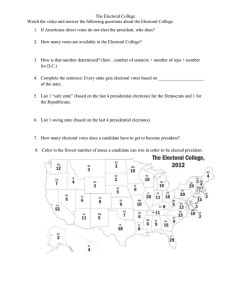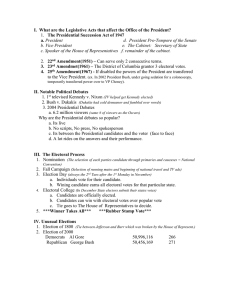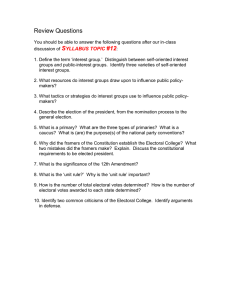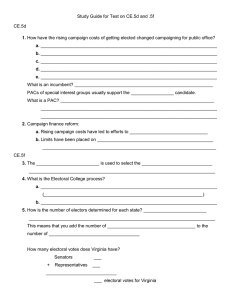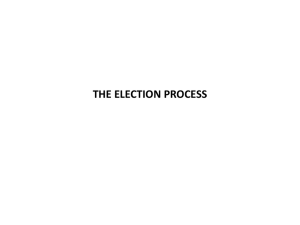Study Guide for Test on CE.5d and .5f CE.5d
advertisement
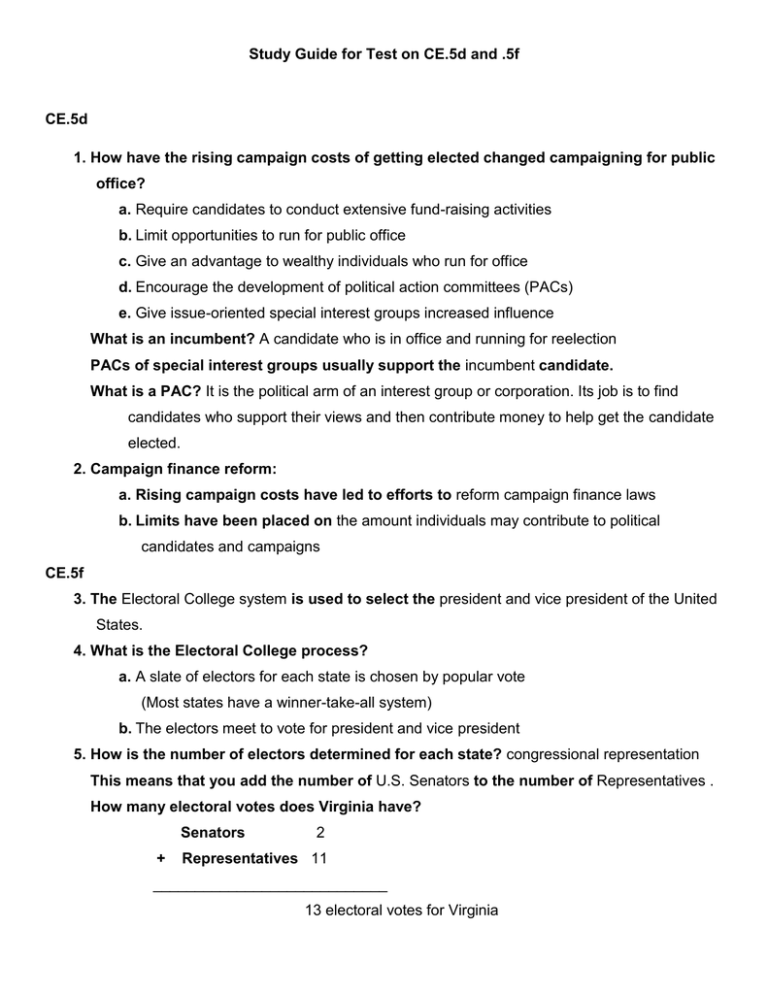
Study Guide for Test on CE.5d and .5f CE.5d 1. How have the rising campaign costs of getting elected changed campaigning for public office? a. Require candidates to conduct extensive fund-raising activities b. Limit opportunities to run for public office c. Give an advantage to wealthy individuals who run for office d. Encourage the development of political action committees (PACs) e. Give issue-oriented special interest groups increased influence What is an incumbent? A candidate who is in office and running for reelection PACs of special interest groups usually support the incumbent candidate. What is a PAC? It is the political arm of an interest group or corporation. Its job is to find candidates who support their views and then contribute money to help get the candidate elected. 2. Campaign finance reform: a. Rising campaign costs have led to efforts to reform campaign finance laws b. Limits have been placed on the amount individuals may contribute to political candidates and campaigns CE.5f 3. The Electoral College system is used to select the president and vice president of the United States. 4. What is the Electoral College process? a. A slate of electors for each state is chosen by popular vote (Most states have a winner-take-all system) b. The electors meet to vote for president and vice president 5. How is the number of electors determined for each state? congressional representation This means that you add the number of U.S. Senators to the number of Representatives . How many electoral votes does Virginia have? Senators + 2 Representatives 11 ____________________________ 13 electoral votes for Virginia Because of the winner-take-all system, when presidential candidates campaign, they target more populated states. However, in a tight election, they must pay attention to less populated states, because the electoral votes there may make a difference between winning and losing. 6. A presidential candidate needs 270 electoral votes to win. 7. Because a majority of electoral votes is required to win, the Electoral College favors a two-party system. 8. If a candidate does not win the majority of electoral votes, the House of Representatives will choose the winner of the presidential election. How does the Electoral College work? Step One: State parties (in most states) choose the electors who will be on the slate. Each state (plus Washington DC) actually has its own separate election for president. With the exception of Maine and Nebraska the states have a winnertake-all system. This means that no matter how close the election is, the candidate with the most votes wins all of the electoral votes the state has. Because of this, candidates will target more densely populates states. However, in a very close election they must pay attention to the less densely populated states. In an election such as the one in 2012, candidates will not spend much time in states that are leaning heavily toward voting for them. They will spend the most time and money in states that are considered to be a swing state. Step Two: On Election Day, the voters go to the polls to vote for the slate of electors That represents the candidate they want to win. Step Three: In December the electors go to their state capitols and cast their votes. They are sealed and sent to Congress to count. The House of Representatives will choose the next president if there is no majority of electoral votes received.
